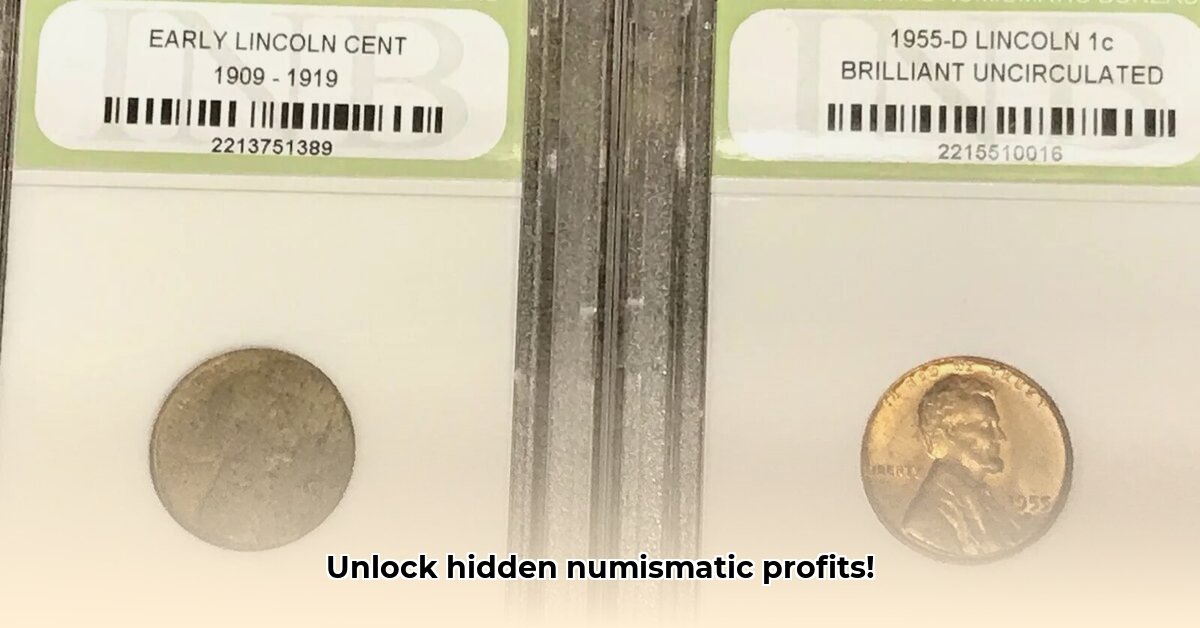
International Numismatic Bureau: Navigating the World of Coin Collecting
The world of numismatics—coin collecting—offers a fascinating blend of history, artistry, and investment potential. But this exciting field also presents challenges, particularly for those new to the hobby. This guide will equip you with the knowledge and strategies needed to navigate the complexities of the international coin market, touching upon the often-mysterious role of organizations like the International Numismatic Bureau (INB) and how to utilize their (limited) resources. Are you ready to embark on this rewarding journey?
Building Your Foundational Numismatic Knowledge
Before diving into the thrilling world of rare coins, a solid foundation is crucial. Begin your journey with these essential steps:
Immerse Yourself in the Community: Join a local or national coin club. Networking with fellow enthusiasts provides invaluable learning opportunities and fosters a sense of community. These groups often offer educational resources and access to experienced collectors.
Master the Numismatic Lexicon: Familiarize yourself with key terms such as "mint state" (a coin's condition), "grading" (assessing a coin's quality), and "authentication" (verifying a coin's genuineness). Numerous online resources and books offer comprehensive guides to numismatic terminology.
Specialize Your Collection: Rather than attempting to collect everything, focus on a specific area of interest. This approach allows for deeper knowledge and a more informed collecting strategy. Do you prefer ancient Roman denarii, or perhaps modern commemorative coins? Focusing your energy provides a competitive edge as you become more knowledgeable.
Monitor Market Trends: Regularly track market prices for coins within your area of expertise. Online auction sites and dedicated forums provide valuable insights into price fluctuations and market trends. This will help you identify undervalued opportunities and avoid overpaying. Remember, however, that online sources are only one piece of the puzzle. Always cross-reference your findings.
Assessing the Risks and Rewards of Coin Investing
Like any investment, coin collecting presents both opportunities and risks. Understanding these nuances is key to making informed decisions.
| Advantages | Disadvantages |
|---|---|
| Potential for significant returns | Risk of counterfeits and inaccurate grading |
| Tangible asset; you physically own the item | Market volatility and price fluctuations |
| Educational and historical significance | Difficulty in quickly liquidating certain investments |
| Building a lasting legacy and family heirloom | Storage and security concerns |
To mitigate risks associated with fraud:
- Seek Multiple Opinions: For valuable coins, obtain professional authentication from multiple independent sources before purchasing. A second—or even third—opinion can be invaluable.
- Thoroughly Understand Grading: The numerical grading system critically impacts a coin's value. Invest time in mastering the nuances of coin grading scales and their significance.
- Diversify Your Portfolio: Avoid concentrating your investment in a single coin or type of coin. A well-diversified collection helps mitigate potential losses.
Advanced Strategies for Seasoned Numismatists
Once you've mastered the basics, consider these advanced techniques to elevate your collecting and investing success:
- Analyze Auction Catalogs: Carefully review auction house catalogs to gain insights into past sales and market trends. This historical data offers valuable context for pricing and investment decisions.
- Conduct Thorough Research: Invest in in-depth research on the history and performance of specific coins. Knowledge is power in this field, and time spent researching usually results in a greater ROI.
- Cultivate Your Network: Build relationships with experienced collectors and appraisers. This professional network provides incredible access to insights, support, and opportunities.
The Future of Coin Investing and the Role of the INB
The numismatic landscape is continuously evolving, influenced by technological advancements and changing global economics. The INB, while relatively opaque, has the potential to play a significant role in setting industry standards. Increasing transparency from organizations such as the INB would be a beneficial development for the industry. Adaptability and continuous learning are key to long-term success in the dynamic world of coin collecting. The potential rewards, both financial and intellectual, are considerable.
Authenticating Rare Coins: A Practical Guide
Authenticating coins, especially those from historically significant periods like the Parthenopean Republic, is crucial. Forgery is a significant risk in the numismatic market.
Step-by-Step Authentication Process
Visual Inspection: Begin with a meticulous visual examination using appropriate magnification. Analyze details such as lettering, mintmarks, and wear patterns. Discrepancies are crucial red flags.
Weight and Measurement: Utilize precise instruments to compare your coin's measurements to established standards for genuine coins.
Comparative Analysis: Compare your coin with high-quality images and descriptions from reputable sources.
Advanced Testing (if needed): Explore advanced techniques such as X-ray fluorescence (XRF) for definitive authentication of high-value coins. This is a relatively expensive option.
Expert Consultation: Consult experienced numismatists and appraisers for professional opinions. Their expertise is invaluable.
Professional Certification: Consider professional certification as a comprehensive method for protecting your investment. Services like the Numismatic Guaranty Corporation (NGC) provide such certification and verification.
By diligently following this comprehensive guide, you'll be well-equipped to navigate the intricacies of the international numismatic market, building a rewarding and potentially profitable collection of coins. Remember, continuous learning, network building, and careful research are essential for lasting success in the numismatic world.